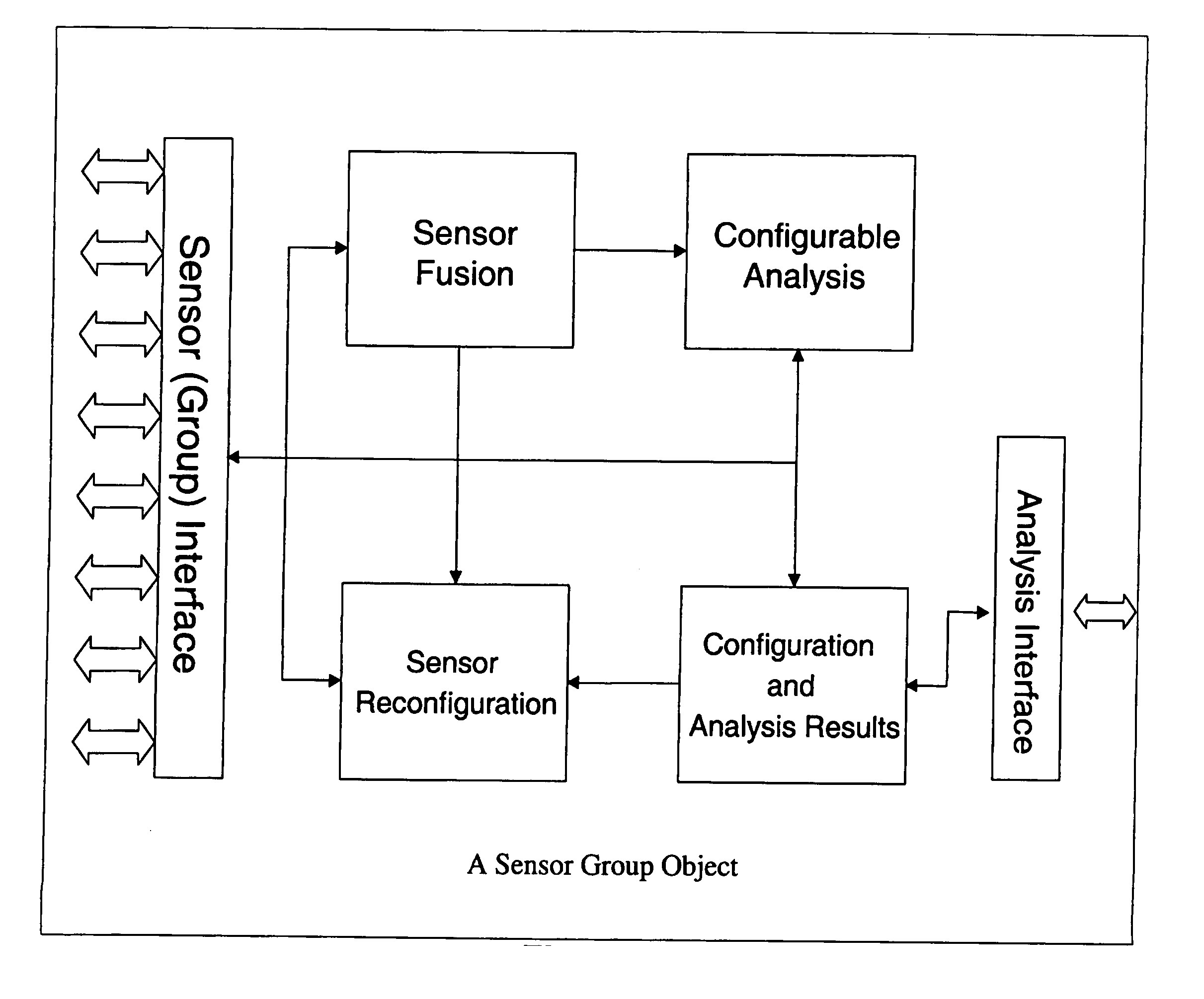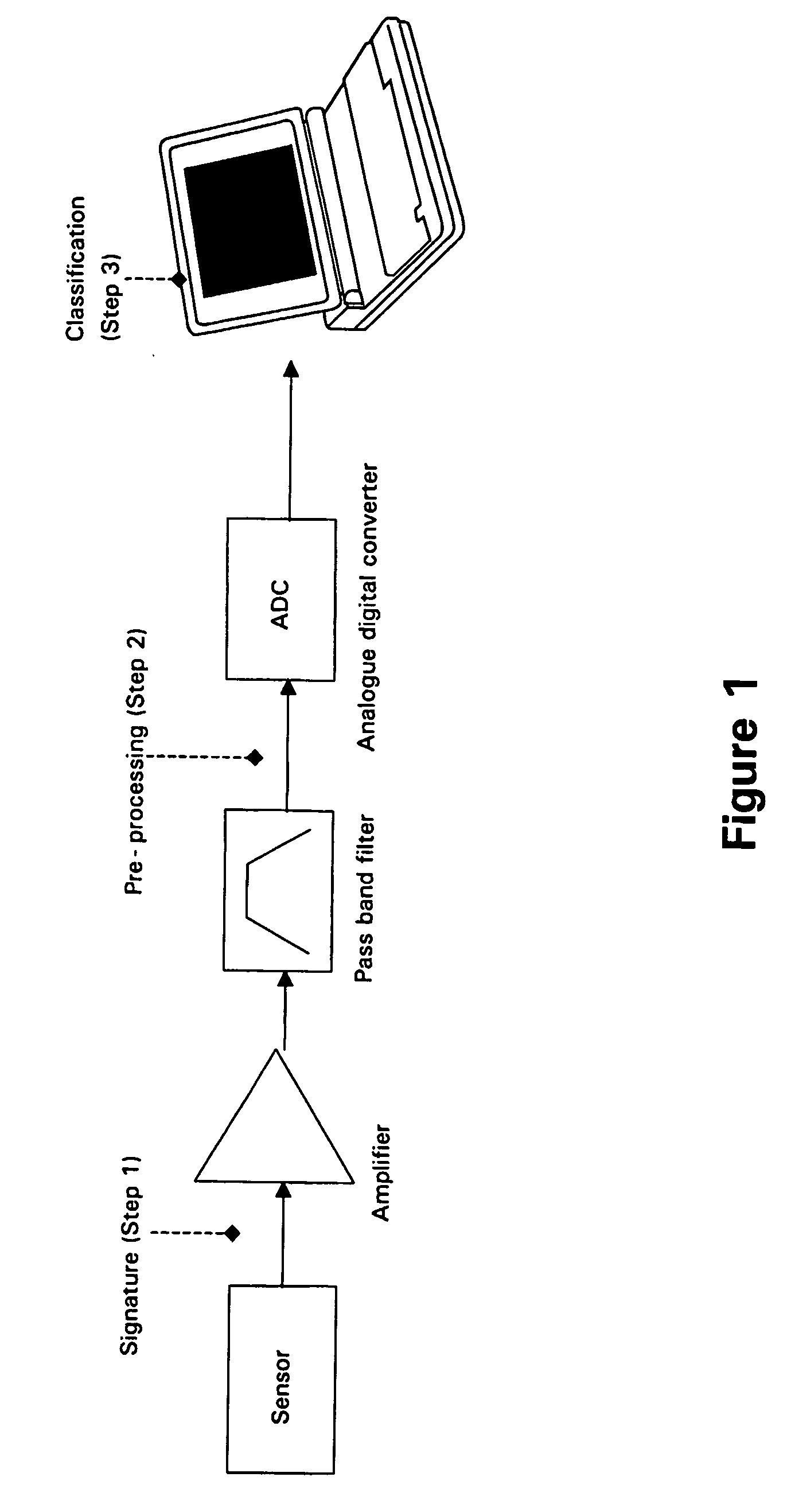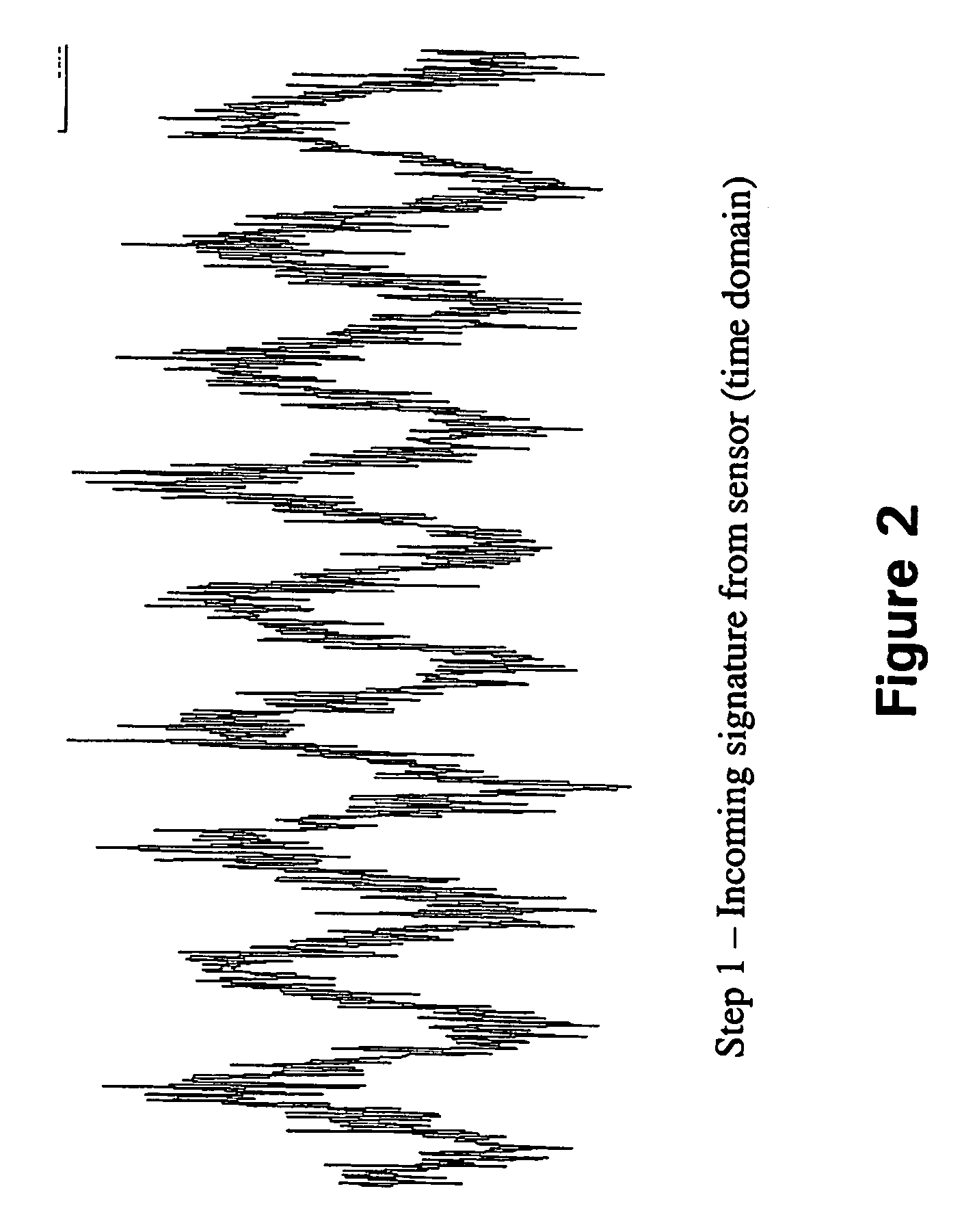Data analysis system and method
a data analysis and data technology, applied in the field of data analysis system and method, can solve the problems of difficult recognition of cmss, unsuitable for use in ill-defined domains or domains, unknown and possibly abnormality, etc., and achieve the effect of improving detection accuracy
- Summary
- Abstract
- Description
- Claims
- Application Information
AI Technical Summary
Benefits of technology
Problems solved by technology
Method used
Image
Examples
Embodiment Construction
[0082] With reference to FIGS. 8 to 10, an Intelligent Data Analysis (IDA) unit 10 for a sensor network is shown. This unit is responsible for collecting, managing and analysing data from a hierarchically structured network of sensors. The IDA unit 10 allows users to add sensors to or remove them from the network, organise them into groups, configure them and analyse the data they produce. The IDA unit 10 allows for automatic data analysis by learning normal / abnormal patterns in sensor data. On detection of abnormal patterns an alarm is raised automatically. The user can configure the learning and analysis features of the unit by specifying rules for individual sensors. The unit also provides analysis of historic sensor data and generates reports on demand.
[0083] Functions of the IDA unit 10 may include: [0084] Providing an output to a GUI that allows users to configure and analyse sensor data; [0085] Managing a sensor network by organising sensors into sensor groups; [0086] Access...
PUM
 Login to View More
Login to View More Abstract
Description
Claims
Application Information
 Login to View More
Login to View More - R&D
- Intellectual Property
- Life Sciences
- Materials
- Tech Scout
- Unparalleled Data Quality
- Higher Quality Content
- 60% Fewer Hallucinations
Browse by: Latest US Patents, China's latest patents, Technical Efficacy Thesaurus, Application Domain, Technology Topic, Popular Technical Reports.
© 2025 PatSnap. All rights reserved.Legal|Privacy policy|Modern Slavery Act Transparency Statement|Sitemap|About US| Contact US: help@patsnap.com



